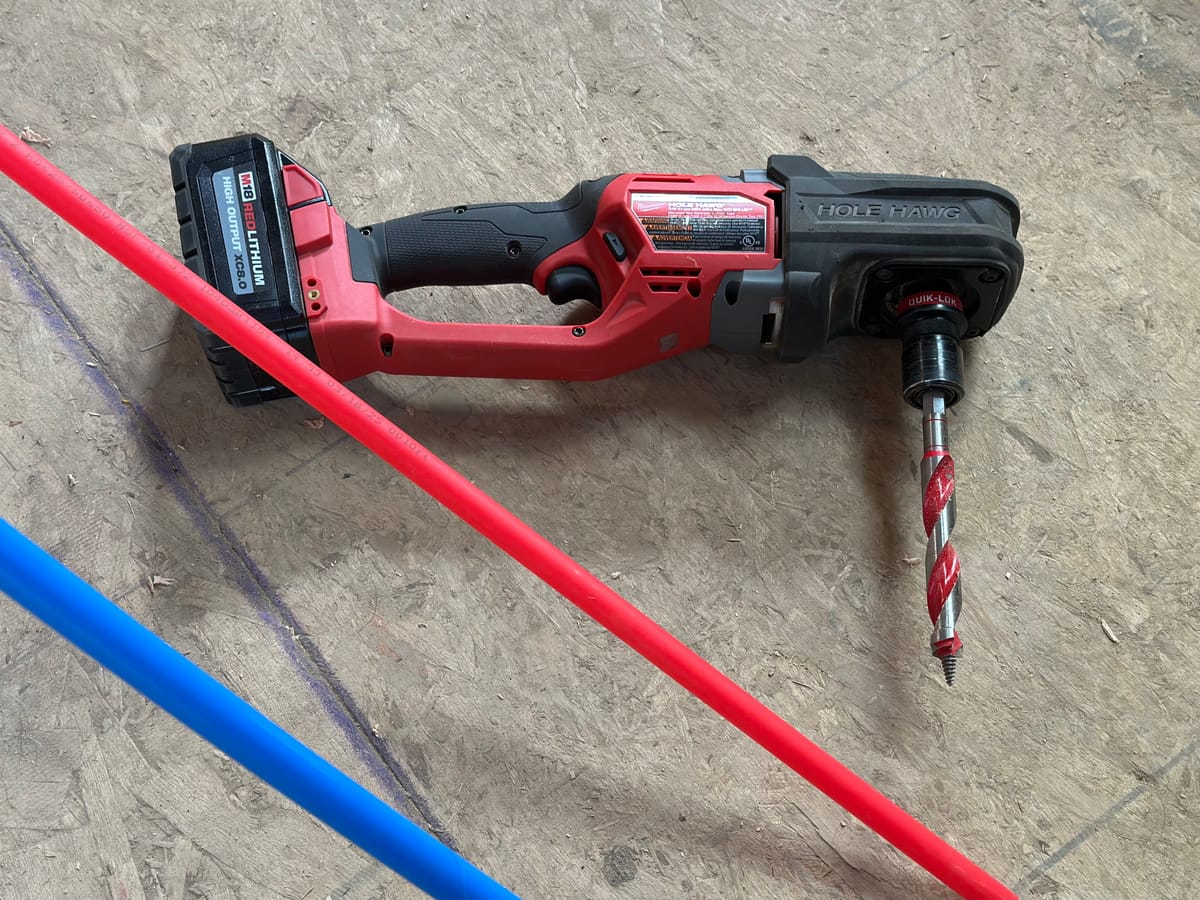A Quarter-Inch Hole

A few months ago I was at the Micromobility Americas conference listening to the keynote by Horace Dediu, where he was discussing people’s choices around transportation through the “jobs to be done” framework. When he got to the quote (attributed to Harvard Business School professor Theodore Levitt) “People don’t want quarter-inch drill bits. They want quarter-inch holes,” something about it seemed off. Like maybe the quote is true of drill bits, but I don’t think it’s true of drills (in the sense of the tool that turns the drill bit[1]), or really tools in general.
After all we were talking about transportation, where expressing individuality through one’s choice of vehicle, or choice of customizations, or even choice of bumper stickers, was a huge part of the equation. In transportation, it might be true of an individual trip (which is what I think Dediu was referring to), but it’s clearly not true of the tools we use to get around. Especially in North America, and super especially in Southern California[2] where the conference was being held.
If the job to be done of a vehicle were “get me from point A to point B with as little trouble and expense as possible”, the Ford F-150 would not be the best-selling vehicle in the United States of America, because it doesn’t do a very good job of that[3].
But the job to be done in this case is very much not that, or at least not only that, it’s something more like “let me tell myself a story about how I’m the type of person who uses a pickup truck to do the sorts of things that you need a pickup truck to do.”
We've all done this
It’s easy to scoff at this and say that it’s all about fragile masculinity and compensating for perceived inadequacies, but who among us has not bought something like an expensive camera (that mostly gathers dust) for a reason like “I need this because I’m a Serious Photographer and this the type of camera that a serious photographer uses.” Or bought a computer that’s much more powerful than we could ever possibly need because we hope to do Important Computer Things with it. Or bought an expensive kitchen gadget (that gets used exactly once) because it’s the sort of thing a serious cook would own.
Nearly every human alive who has the capacity to purchase an expensive tool has fallen into this pattern. Marketers, of course, have discoverd and exploited this trap. Business-to-consumer advertising nowadays consists almost entirely of selling the story, regardless of whether the tool is sufficent–or even necessary—for fulfilling the story.
Car advertisements don’t show a morning commute, they show the sort of open road that rarely exists within a convenient driving distance from where most people live[4]. Apple sells creativity and noncomformity, even if their computers are mostly used for browsing the web and sending emails. Patagonia sells the story of being an outdoorsy person even if their fleece is mostly worn by VCs.
The tools may be great, but what they’re really selling is the story about yourself that buying the tool unlocks.
Just do it
Nike famously sells their athletic gear using the tagline “Just do it”, but if you took that literally, you wouldn’t even need to buy a new pair of sneakers. The sneakers are a tool, but you probably already own a sufficiently good pair of shoes. In the end the tool is just a symbol, and what you think the tool unlocks was only ever locked in your mind.
To become a runner doesn’t require especially excellent running shoes (at least at first), but it does require going out the door and at least running around the block.
Oliver Burkeman explores this idea in his book (Meditation For Mortals)[https://www.oliverburkeman.com/meditationsformortals]. It’s easy to get caught up in all sorts of imagined prerequisites for the kind of life we want to live, but (for example) if you want to be the type of person who meditates, you don't really need a special meditation cushion, or to attend a meditation retreat, or really to do anything but sit down, set a timer for five minutes, close your eyes, and (I’m paraphrasing here) try to think of nothing.
To become a blogger doesn’t require enless hours of fiddling to get the perfect distraction-free writing environment (although I'm finding the lack of smart quotes in Ghost's markdown mode to be especially annoying right now), it requires sitting down and cranking out your first blog post.
Applying the lesson
The picture at the top of this post is of the drill I bought myself to help with a big renovation I’m doing. It’s known as a “Hole Hawg”, and like many nerds of my generation, I learned of its existence through a book-length essay by science fiction author Neal Stephenson. A quarter-inch hole is pretty straightforward to drill with a garden-variety cordless drill (or even a hand drill, I suppose). But an inch-and-a-quarter hole takes some dedication.
The Hole Hawg more or less entirely removes the “how hard will it be to drill this hole” question from the equation of where to route wires and pipes, and turns it into questions like “what’s the most efficient way to route this pipe?” and “what does the International[5] Residential Code have to say about drilling holes in studs and joists?”. Buying it really has unlocked some abilities for me (although maybe I could have just rented one if I had planned my work out carefully).
But also, sometimes it’s OK to buy something just to tell yourself a story. The reason I was at the Micromobility Conference in the first place was to tell myself a story that someday I might do Micromobility Stuff for a living, or at least devote a significant fraction of my free time to tinkering with it (in place of the quiet desperation of the boring-but-stable-and-well-paid job I have now). In the meantime I could go to a conference and hang out with people who were actually in the arena doing the thing, and maybe some of the glamour and or enthusiasm would rub off on me.
The main problem is that having purchased the tool—or joined the gym—or attended the conference—can be an excellent mental substitute for using the tool, or working out, or doing the sort of career reset you would need to enter a new industry. If you want realize the outcome you’re imagining, there’s no subsitute for actually (or metaphorically) applying the tool to a workpiece and, well, doing the work. Or as the famous tagline says "just do[ing] it". When you buy a tool to tell a story about yourself, don’t forget the part about trying to make it come true.
I’ve heard that actual machinists refer to what's commonly known as a "drill bit" as simply a "drill". ↩︎
Motto: let’s take (arguably) the single most favorable climate in the entire world for active transportation, and pave over every last square inch of it with car infrastructure! ↩︎
The fuel consumption–although surprisingly good for such a large vehicle–is pretty bad. The turning radius is comically large, especially for a front-engine-rear-drive vehicle that should have plenty of space to turn the wheels. In fact the vehicle as a whole is comically large, as you'll soon find when trying to navigate any parking lot that wasn't designed with this sort of behemoth in mind. ↩︎
It’s been said that bicycles deliver the freedom that car advertisements promise. ↩︎
Like so many things in the industry, "International" in this context means "USA (and Canada)". ↩︎
